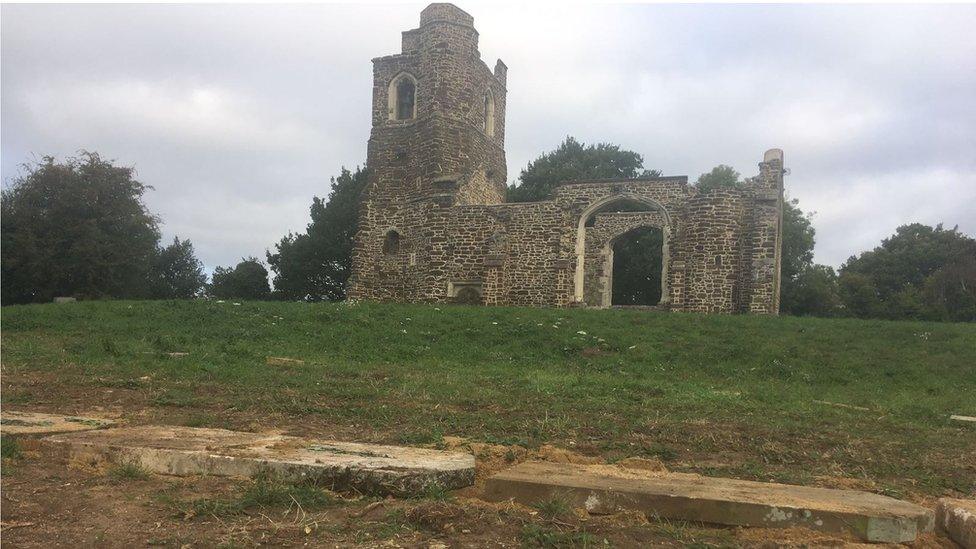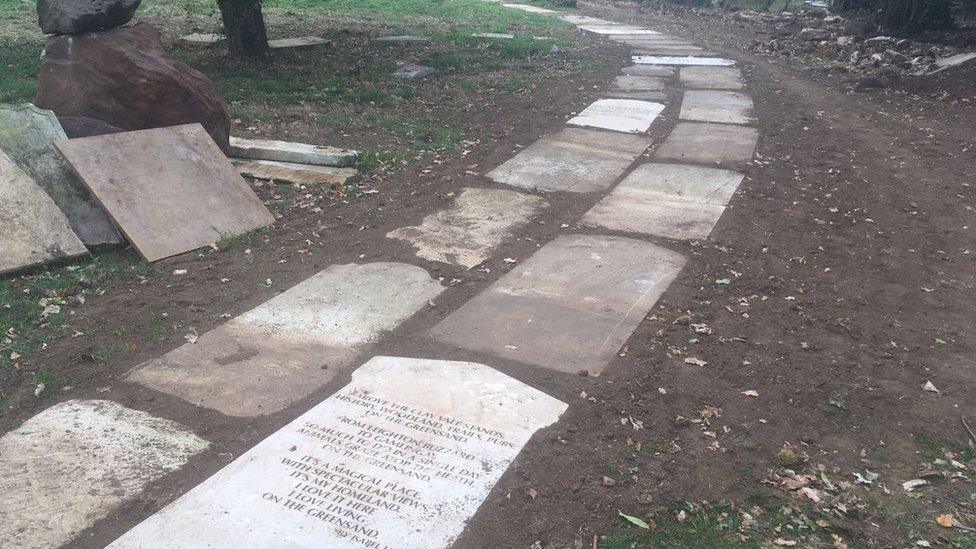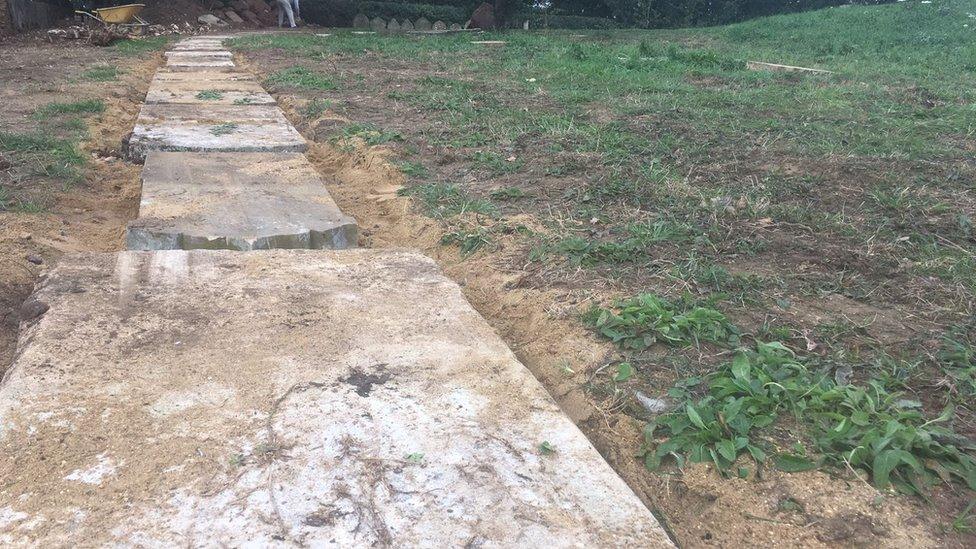Tombstone footpath a 'grave error' at Clophill church
- Published

St Mary's Church in Clophill was built in about 1350
A church has been accused of making a "grave error" by using ancient tombstones as a footpath.
The trust that manages St Mary's Church in Clophill, Bedfordshire, said it came from "professional advice" on saving the gravestones for the future.
Clophill Heritage Trust said the stones, which now form part of the Poetry and Peace Path, had already moved from original sites in the 1960s.
Church Society vice president Alison Ruoff called the path "brilliant".
The gravestones are understood to all be more than 100 years old and a remembrance garden will be planted along the path.
The trust said the stones continued to be "a target for anti-social behaviour" despite being moved around the perimeter of the church in the 1960s.
Ms Ruoff said "vandals are always up to something" and she was pleased that the gravestones would now be "used for something that can be made beautiful".

The gravestones have been used to create the Poetry and Peace Path in the old churchyard
She added: "You can go to many churches and actually walk on people's gravestones in the aisle. You don't go leapfrogging around them, you just walk over them normally.
"They're there as a reminder of people who have lived their lives well or not in the past. Why should we worry about it? We get hung up on all sorts of strange things."
But a number of people commented about the "disgraceful" and "disrespectful" path on the BBC Three Counties Radio Facebook page.
One man said the path, which features poetry from young people, showed an "astonishing lack of respect".
He added: "Grave error bearing in mind the villagers were not consulted and many are in uproar after only finding out about it yesterday."
Others were open to the idea, with one person calling it a "great use of these semi-historic bits of stone".

Clophill Heritage Trust said a remembrance garden will be planted alongside the path with poppies and native wildflowers
You may also be interested in:

Clophill Heritage Trust was formed in 2010 and is dedicated to stopping the "damage and disrespect of the graves"
The trust said it had "sought professional advice regarding the best way forward" for the stones, many of which were "in danger of falling".
"Churches regularly reuse old gravestones where the inscription is no longer visible, and we have followed best practice by recording which stones have been placed in each location," it said.
"The Poetry and Peace Path was seen to be the most appropriate and positive way of keeping and denoting respect for the flat stones without inscriptions."